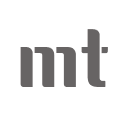Alarms Configuration Platform – UX Design Case Study
We set out to design the very first cloud-based alarm configuration and monitoring platform, which enables users to effectively track and manage alarm events across a diverse array of connected product lines and various devices. This innovation aims to streamline the user experience and enhance operational efficiency.
Target Audience
We identified two key user groups:
Technical Engineers with deep knowledge of product lines and industrial devices.
Non-technical Users seeking visibility into system events and overall device performance.
Project Scope
An enterprise-level, cloud-based application designed with a fully responsive interface to support desktop and tablet usage.
My Role
As the UX Designer, I led the entire design process from discovery to delivery:
Conducted stakeholder and user interviews to gather insights and requirements.
Created and tested wireframes and low-fidelity prototypes, then iterated based on feedback.
Developed high-fidelity mockups and interactive prototypes, conducted usability testing, and made further refinements.
Collaborated closely with developers during implementation to ensure design integrity and usability.
Team Collaboration
Worked cross-functionally with stakeholders, product managers, developers, and end users to ensure alignment between business goals and user needs.
Tools Used
Whiteboard, Adobe XD, Axure
IoT Data Configuration Platform – UX Design Case Study
We aimed to design the first cloud-based device configuration and monitoring platform for gateways and connected industrial devices, such as controllers and drives.
Target Audience
We identified two key user groups:
Internal Technical Engineers familiar with the company’s product lines and device ecosystem.
Customer Engineers using the platform to configure and monitor devices in the field.
Project Scope
An enterprise-grade, responsive cloud application tailored for industrial environments and complex device configurations.
My Role
As the UX Designer, I led the full design process from discovery to development handoff:
Conducted stakeholder and user interviews to understand workflows and technical requirements.
Created and tested wireframes and low-fidelity prototypes, applying iterative feedback loops.
Designed high-fidelity mockups and interactive prototypes, validating them through user testing.
Supported the development team throughout implementation, ensuring design fidelity and usability.
Team Collaboration
Worked closely with cross-functional partners, including stakeholders, product managers, engineers, and end users to align technical functionality with user experience.
Tools Used
Whiteboard, Adobe XD, Axure, HTML & CSS for prototyping
Recognition
The IoT Data Configuration Platform was showcased in partnership with Microsoft at Hannover Messe 2019, one of the world’s leading industrial technology fairs. It was an honor to see the product I designed featured on stage and to engage with industry professionals from around the world.
Data Integration Platform – UX Design Case Study
The goal of this project was to design a cloud-based application that restores historical data stored in blob storage back into the database, enabling further analysis and visualization of operational data.
Target Audience
Our primary user group was technical engineers familiar with the product line and the specific data being collected—typically those responsible for system diagnostics, analytics, and historical trend analysis.
Project Scope
An enterprise-level, responsive cloud application designed to handle large-scale data workflows and complex data input structures.
My Role
As the UX Designer, I owned the end-to-end design process:
Conducted stakeholder and user interviews to gather technical requirements and understand user needs.
Created and tested low-fidelity wireframes to explore layout and functionality.
Designed high-fidelity mockups and interactive prototypes, incorporating user feedback and iterating accordingly.
Collaborated closely with developers during implementation to ensure seamless execution of the design vision.
Team Collaboration
Worked cross-functionally with stakeholders, product managers, engineers, and end users to align on functionality, usability, and system architecture.
Tools Used
Whiteboard, Adobe XD, Axure
Out of Box Agent (OOB) – UX Design Case Study
The Out of Box Agent (OOB) is an application that runs directly on a gateway device, enabling users to configure the device and monitor its health and operational status.
Problem to Solve
Users were struggling to successfully complete device setup. Through user reviews and support feedback, we identified a common issue: a lack of clarity around the setup process. Our hypothesis was that users were not aware of the necessary steps required to complete the configuration, leading to incomplete or failed setups.
My Role
As the UX Designer, I was responsible for setting the overall design direction of the project. I collaborated closely with stakeholders, developers, and the broader design team to:
Define the user journey and simplify the configuration flow
Lead ideation sessions to explore and validate solutions
Align the experience with user needs and device capabilities



